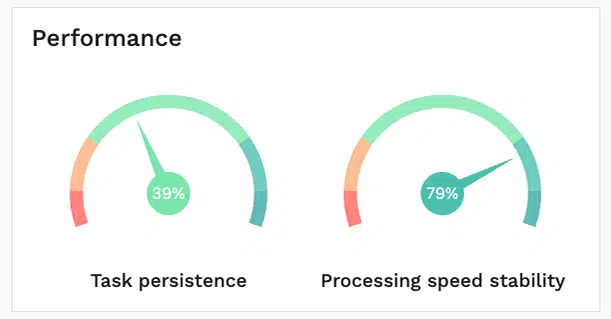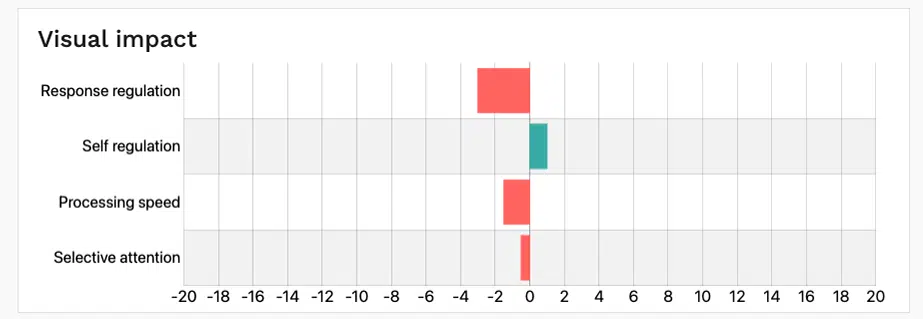What is MOXO d-CPT
The MOXO neuropsychological assessment is a clinically trusted continuous performance test that incorporates both auditory and visual distractors, measuring a range of attentional parameters. Supported by over 100 research projects and peer-reviewed publications, MOXO has been utilized in more than 1,000,000 assessments worldwide.


MOXO d-CPT is widely applied in hospitals & education institutions, and adapted in 39 countries as ADHD diagnostic tool. The assessment can be completed in 15 minutes quantifying children's attentive level rapidly and demonstrating benchmark on same aged peers comparison.
Our business affiliate, BrainX, partners with Esperanza in promotion MOXO d-CPT in Hong Kong education sector, and received the EdTech Heroes Award (K12 Track) at EdTech Asia Summit 2023, being the sole non-mainstream education institution honored in the K-12 category.
Features of MOXO d-CPT
Unique Distractor System
Incorporates both visual and auditory distractors that effectively simulate real-world environments for enhanced realism.
Fully Accessible Anywhere
Allows users to send and run assessments from virtually anywhere using just a laptop and reliable internet connectivity.
Extensive Database Access
Provides access to a vast array of assessments, ensuring comprehensive evaluation from any connected device.
Detailed & User-friendly Reports
Delivers detailed reports that are not only easy to read but also simple to understand and explain to others.
Simple Setup & Fast Onboarding
Features a quick setup process with a brief training session and an intuitive user interface for seamless navigation.
Strong Security & Privacy
Ensures complete compliance with HIPAA, GDPR, and ISO standards for maximum security and privacy protection.
MOXO Report
Diagnosis reports provide an overall picture of your client’s performance throughout the assessment, including in the presence of auditory, visual and combined audio-visual distractors.
Norm Comparison

Standardized Z-scores are offered for four different attention metrics: Attentiveness, Timeliness, Hyper-Reactivity and Impulsiveness. Scores are standardized based on an age and gender-matched norm group.
Performance Graph

View your client’s performs throughout the assessment and with all distractor types, and interactively compare the different metrics side-by-side.
For assessment takers 26 and younger, you can compare the individual’s performance to a general population reference group.
Distractor Impact

Clearly see which scenarios led to increased performance, and which conditions were more difficult for your client in the distractor impact graph.
Diagnosis Metrics
Profiler reports highlight attentional strengths alongside areas for improvement. View how your client’s performance throughout the assessment translates into focus, information processing, and socio-emotional regulation.
Information Processing & Social and Emotional Regulation

View your client’s standardized percentile scores to capture cognitive and executive functions throughout he entire assessment, and under visual or auditory distraction.
Performance

Understand general performance patterns over the entire assessment presented in standardized percentiles. Task Persistence measures the ability to remain focused over an extended period of time. Processing Speed Stability measures the ability to respond consistently over time.
Auditory & Visual Impact


See the difference between your client’s selective attention, processing speed, response-regulation and self-regulation performance with auditory and visual distractors compared to their performance without any distractors.
Profiler Metrics
MOXO highlights exclusive indicators for your attention and consideration. We offer three indicators that allow you to evaluate the validity, credibility and uniqueness of the assessment before diving into attention profiles and patterns.
Validity Indicator
The validity indicator assesses whether the individual’s responses were consistent and reliable.
invalid assessment indicates a likelihood of random pressing, regardless of the rules of the assessment.
Dissimilarity Indicator
The dissimilarity indicator showcases the uniqueness of an individual’s profile, highlighting how an individual profile stands out from the norm by intelligently considering the intricate web of relationships between attentional metrics.
A dissimilar assessment suggests that the individual’s performance is very unique or unusual, possibly requiring special attention or investigation.
Credibility
The credibility indicator offers a measure of genuine effort to perform well. Individuals with a non-credible results show excessively poor performance, indicating a deliberate effort to fake attentional difficulties. We recommend to re-run non-credible assessments.
